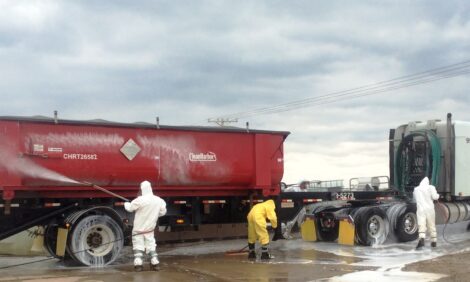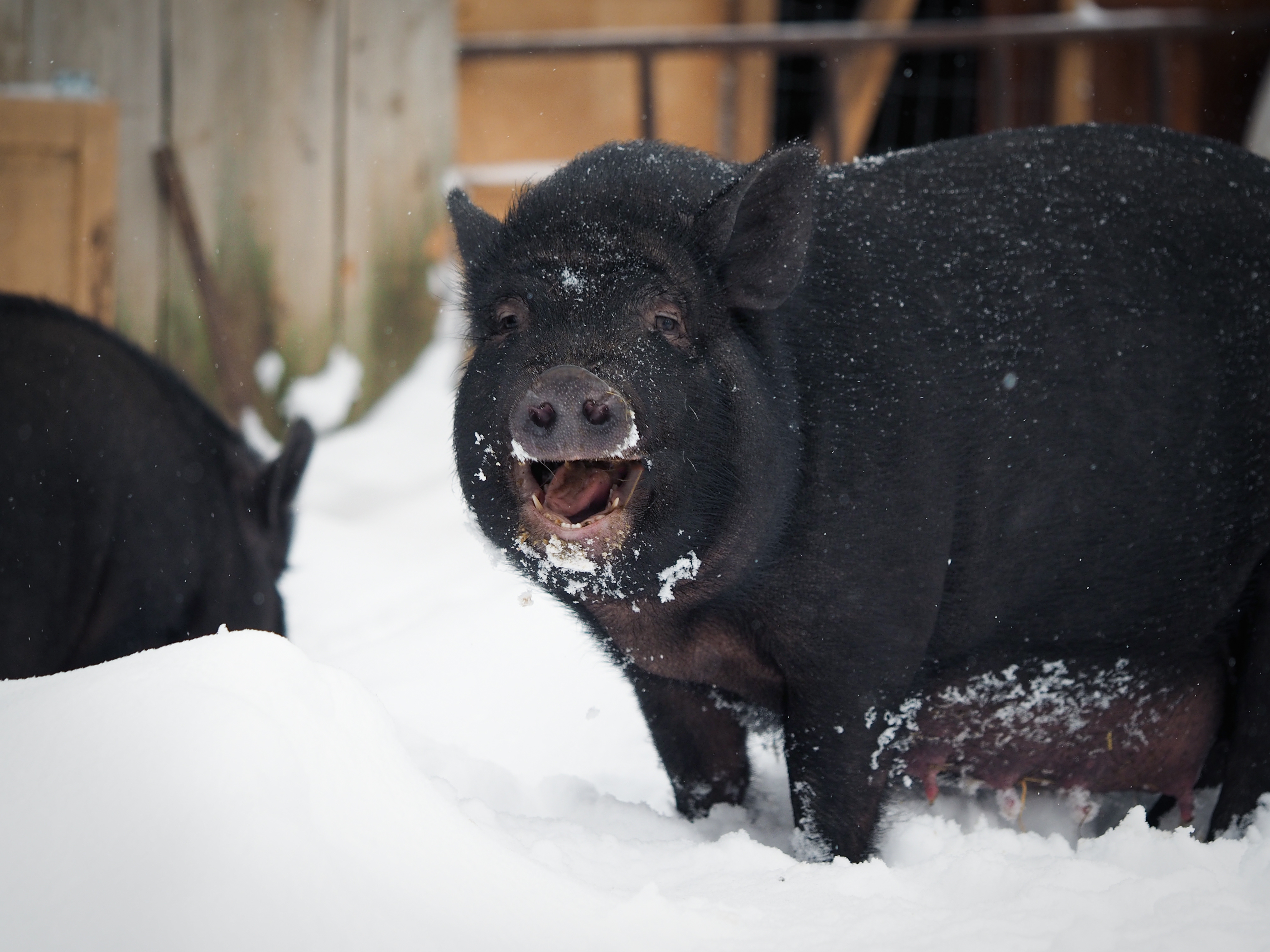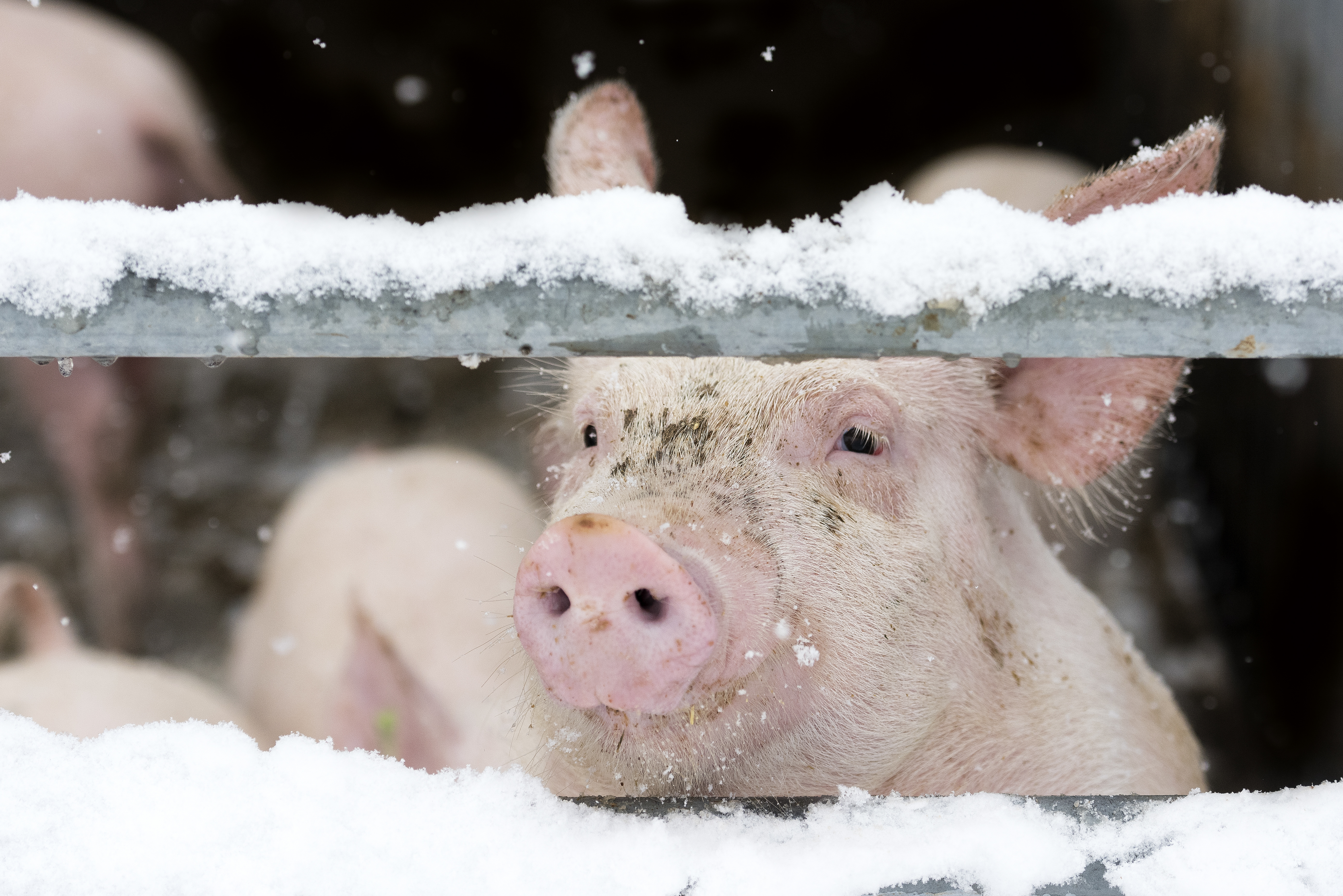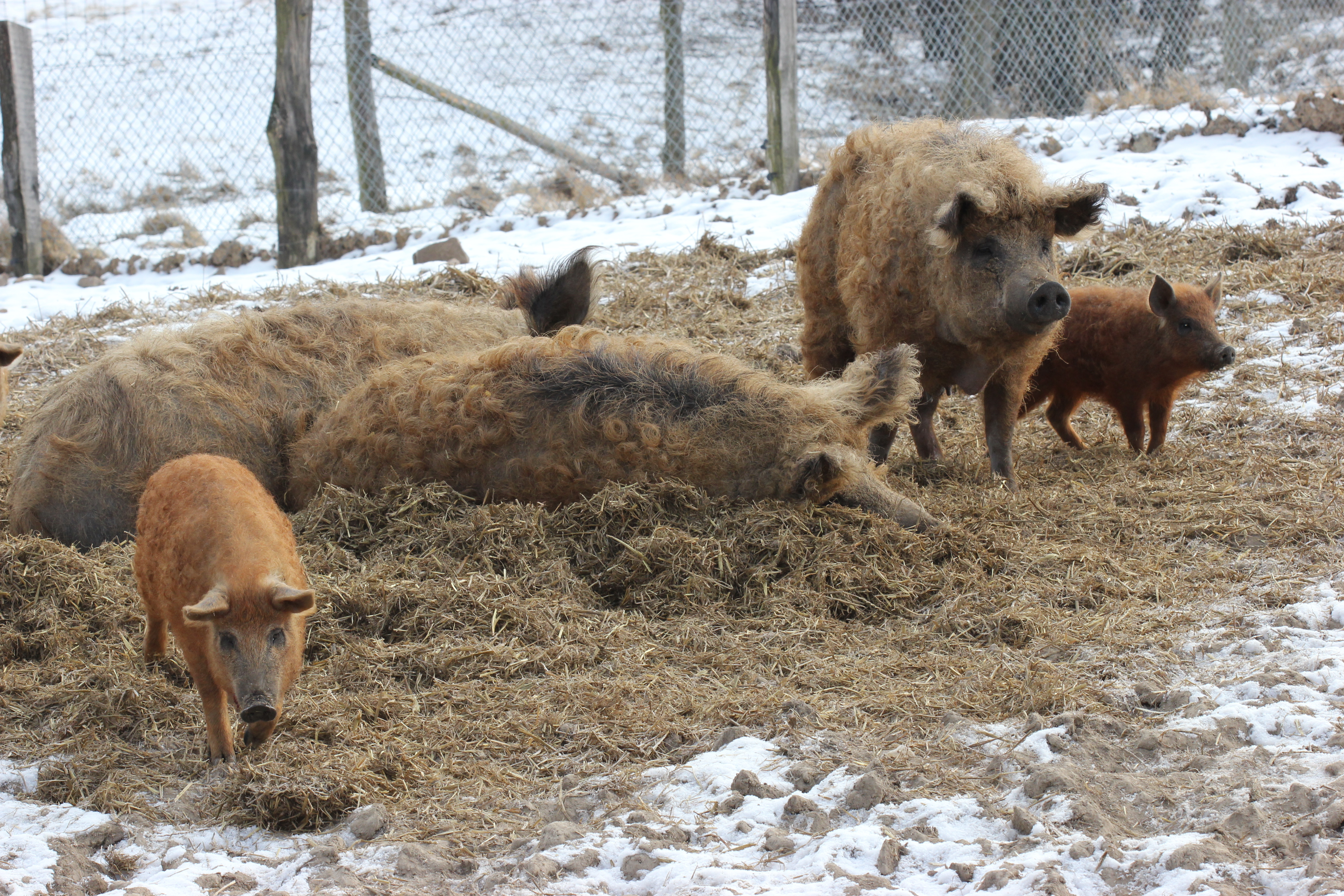



Winter ventilation tips for indoor pig herds
Maintaining good air quality and ventilation in the piggery can be difficult as the weather gets colder, but simple investments and maintenance steps can improve ventilation without adding to your energy bills.Maintaining good air quality is difficult in cold weather. This means that farmers need to devote more time and resources to managing barn conditions and pig welfare. The key challenge for keeping pigs indoors for the winter is achieving a healthy environment while conserving resources.
Maintaining optimal barn conditions is crucial for productivity. Good ventilation not only provides fresh air – it also reduces humidity, keeps dust levels in check and prevents build-up of dangerous gases, such as ammonia and hydrogen sulphide. There is also evidence that maintaining ventilation levels increases pigs’ overall feed intake, while also lowering pigs’ respiratory challenges and mortality.
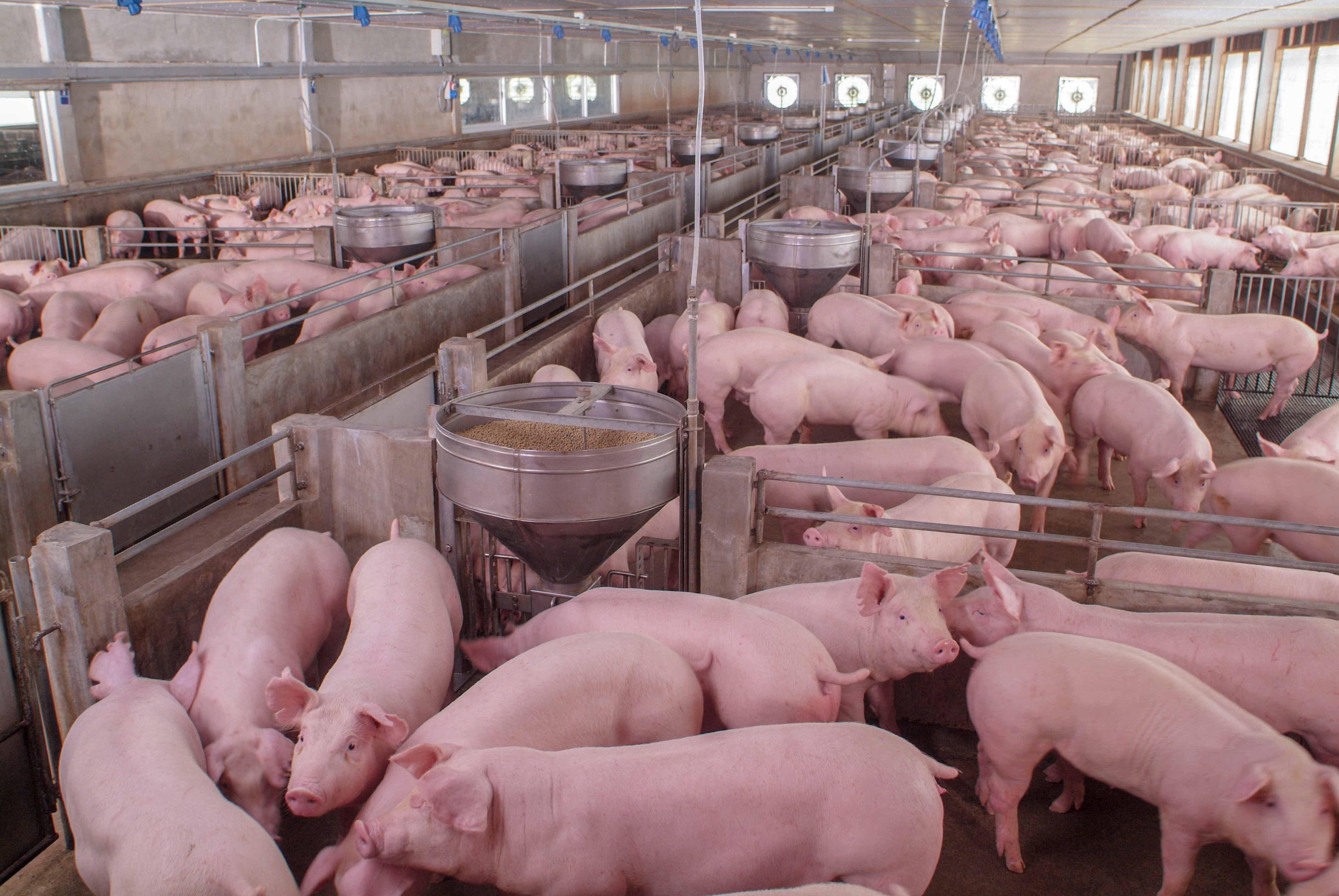
How to determine your minimum ventilation rate
The main rule of thumb for ventilation is to keep a minimum rate of air flow that exchanges the warmer indoor air with cooler outdoor air. This should reduce overall energy costs. Achieving the minimum rate can be difficult – in many cases rates will be run too high or too low. If farmers set the ventilation rates too high, money and energy will be wasted on heating the barn and pigs will spend feed energy on keeping warm. If the rates are too low however, pigs are more at risk of developing respiratory disease and incidences of tail biting can occur.
In order to combat this, producers should calculate the minimum ventilation rates (MVRs) for their barns. MVRs are calculated based on building characteristics, local weather and the growth stage of pigs in the barn.
Ideally, the MVR will allow the system to operate at a low setting when the barn temperature falls below the set point, allowing air exchanges. During winter, the normal ventilation rates should be between five and ten percent of maximum speed. This will maintain air quality whilst also maintaining an ambient temperature in the barn.
Another rule of thumb for good ventilation management is to manage the air exchange and temperature separately. Producers should consider ambient temperature when determining winter ventilation rates and temperatures. This will help you keep energy costs low while getting the best results for your herd.
As the weather becomes colder, adjust the temperature bandwidths on your heating system. There should be a 1° to 2°C range in temperatures. When programming your set point, avoid heater overshoot. Make sure to have the heaters turn on 2°C (3°F) below the set point (temperature in the piggery) and shut off 1°C (2°F) above the set point.
Autumn maintenance leads to winter success
Though it seems obvious, make sure that the equipment in the piggery is cleaned and functioning properly. This is also a good time to make sure buildings are well-sealed: weather stripping on exterior doors and windows should be checked and ensure that any cracks are fixed. Producers should also take steps to prevent rodent infestations as the weather becomes colder.
If possible, invest in monitoring equipment. These systems can track and alert producers of any ventilation issues in real time – letting you nip any problems in the bud. However, think about where you will place the equipment. Temperature sensors should be placed at the pigs’ level to get more accurate readings.
Investing in inexpensive insulation is another step pig farmers can take. Simple fixes like adding bubble wrap to curtains can prevent overnight heat loss. Just remember to leave a 10 to 12-inch gap at the top of the curtain for air to enter the building.
Producers should review their use of brooders and mats in the piggery. Remember that as a general rule, pigs need 0.4 square feet of mat space to eliminate drafting from below the slats or plastic flooring. You should also track the comfort zone for brooders. Though some of the numbers may fluctuate depending on pig size and overall health, research has shown that the comfort zone tends to be 35°C (95°F) for pigs directly beneath the brooder.
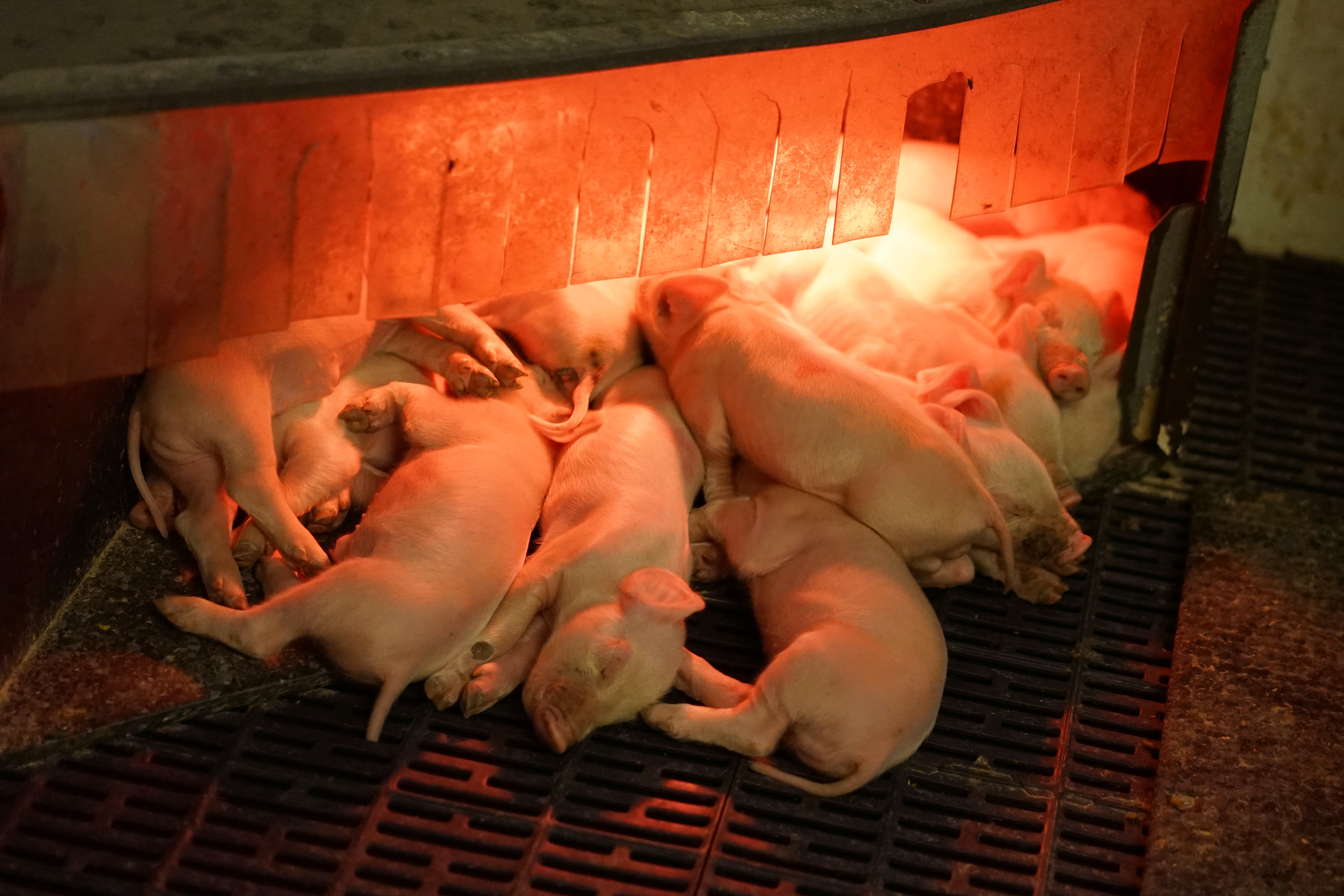
Managing moisture and other quality indicators
Indoor moisture can be generated from the watering system, respiration or evaporated wastes. However, keeping dampness at bay is essential for maintaining barn integrity. If the piggery becomes too humid over winter, the animals could develop respiratory issues.
Producers should repair all water line leaks and any leaks in nipple drinkers to reduce excess moisture. Cleaning pens regularly and maintaining proper dunging patters will remove any moisture and humidity from wastes. Cleaning and mucking out stalls will also prevent ammonia build-up and prevent hydrogen sulphide from proliferating.
Other quality indicators should be monitored over winter as well. Dust from feed and faecal material or gases from manure and dirty pens can contaminate the environment and need to be removed. To keep dust levels in check, producers should avoid handling animal feed or disturbing the pigs. Using safety equipment like dust and eye masks when cleaning stalls is another recommendation.
Getting the most out of fans
Do an equipment audit: keep track of the minimum ventilation variable fan speeds and inlet openings. Producers should aim for 600-800 FPM and less than 65 percent relative humidity. Adding fan cones/hoods is a good idea as well. Research has shown that they can improve fans CFM output by 10-20 percent. Before installing, make sure the hoods are mounted to protect them from the wind. Some exhaust fans will cut off if they’re exposed to wind pressure, removing any potential benefits.
If you’re using variable fans, remember that they shouldn’t run below 50 percent on the controller. If they’re running on a lower setting, the fans may freeze up and will require more long-term maintenance.
Pig keepers should clean their fans after the autumn pumping season and ensure that pump-out covers are in place and sealed. Dirty louvers and fan blades can reduce ventilation efficiency by up to 30 percent, so be sure to have them thoroughly cleaned. Any wall fans that won’t be used in the autumn or winter should be covered. Try using plastic wrap – it’s a good insulator and prevents cold air from entering the barn. Producers should also consider putting space heaters into the barn to avoid temperature shocks.
Key tips for air inlets
As part of the overall equipment audit, make sure inlets are adjusted and calibrated properly. If inlets are calibrated correctly, they can maintain enough air velocity to reach across the ceiling of the barn and then mix with the surrounding air before reaching pig level.
The inlet openings should be matched with the number of fans in the barn, and the opening size should comply with the minimum ventilation rate for your facility. This will allow you to reach the right temperature balance as the outside temperature decreases. If the inlet openings are too tight, they won’t allow the air to mix. It could also freeze the inlets altogether, adding to overall energy costs.






